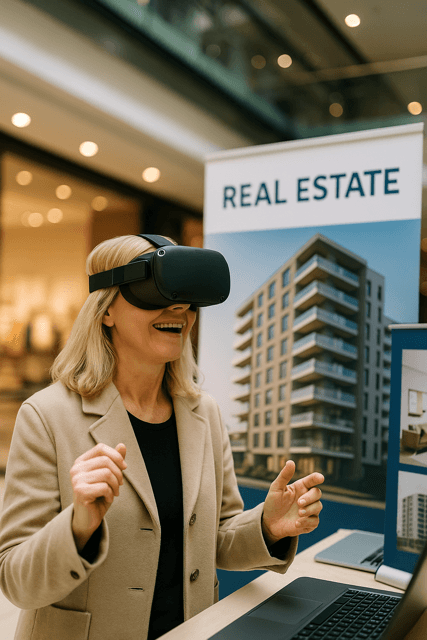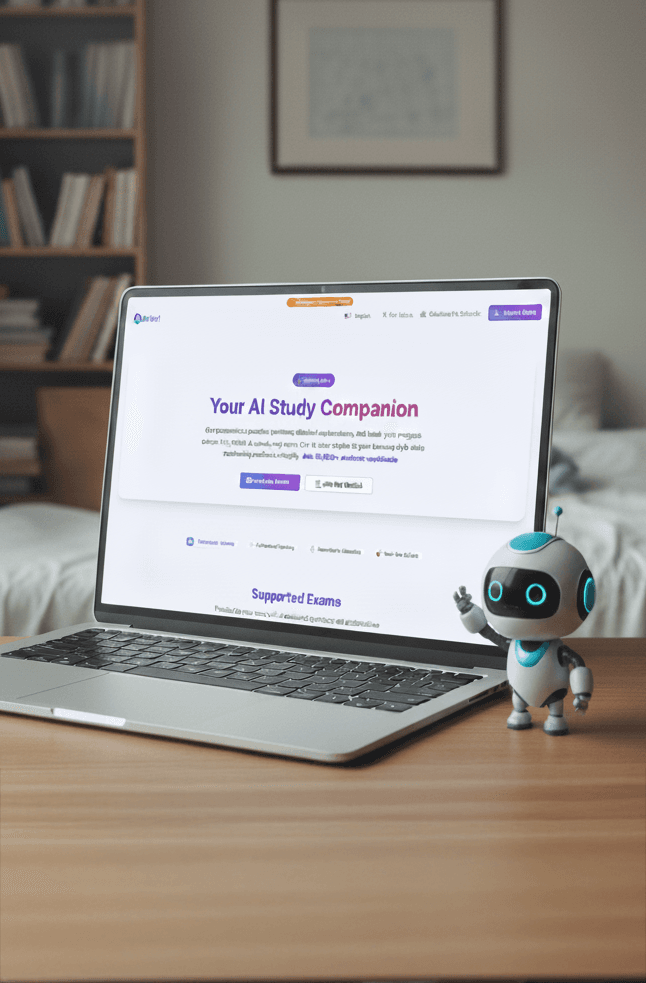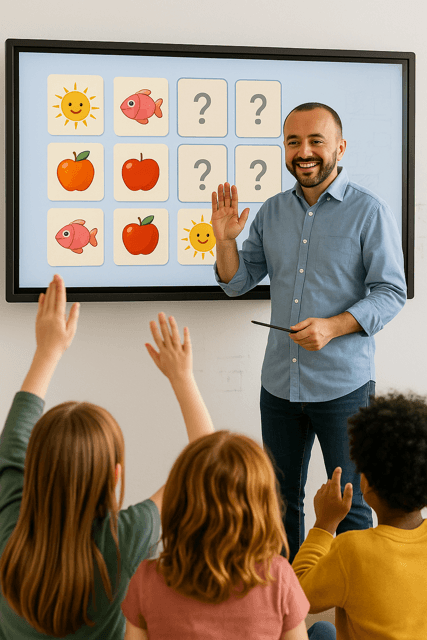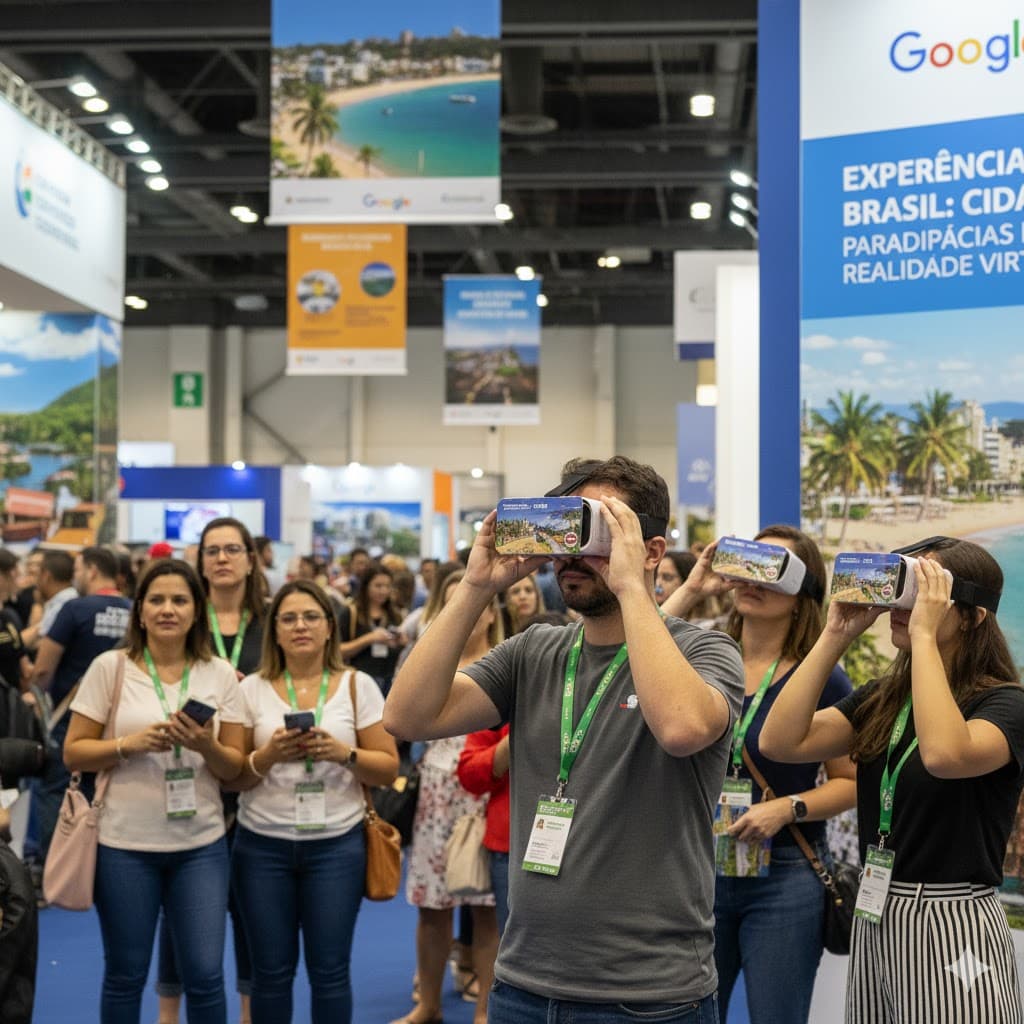Overview
In 2015, I founded Wave Virtual Reality Studio and created the Virtual Showroom—Brazil's first VR-based real estate visualization platform. By combining architectural visualization, game development, and emerging VR technology, I transformed how properties could be sold off-plan, eliminating the need for costly physical models while delivering immersive, photorealistic apartment tours accessible from anywhere.
The Problem
Traditional off-plan apartment sales in Brazil required massive physical and financial investment:
- Physical miniature models in shopping malls with printed materials
- Full-scale temporary apartments built on-site with disposable materials
- Waiting months for the first floor to be completed before installing a model unit
This approach was:
- Expensive: R$45,000+ per project setup
- Wasteful: Most materials (fake plants, temporary walls, fixtures) were discarded after use
- Inflexible: Limited to one location, impossible to show remotely
- Time-consuming: Months to set up physical spaces
Real estate companies needed a scalable, portable, cost-effective solution that could showcase multiple projects without geographic or temporal constraints.
Project Constraints
Technical Limitations
- Mobile VR hardware (Samsung Gear VR + Galaxy S7) had limited processing power compared to PC-based VR
- Motion sickness was a critical UX concern requiring careful navigation design
- Real-time rendering on mobile required aggressive optimization
Business & Market Challenges
- Brazil's real estate market was in crisis (2015-2016)
- VR was completely unknown in Northeast Brazil—high concept risk
- Solo founder with limited runway and no initial funding
- Target clients were conservative, needed proof before investing
Resource Constraints
- Bootstrap budget (personal savings)
- Solo product development initially, later 2 dev interns for 6 months
- Learning Unreal Engine from scratch via tutorials and online courses
Goals & Success Criteria
Business Goals
- Become the first Northeast Brazilian company working with VR for real estate
- Sign 3 pilot clients within 6 months
- Gather feedback to build a replicable platform within 1 year
Measurable Value Proposition
- Reduce project setup costs from R$45,000 to R$15,000 (67% reduction)
- Enable unlimited showings with no additional cost per viewing
- Reduce setup time by 60% compared to physical models
- Enable multi-location and international presentations from a single device
Environmental Impact
- Eliminate material waste from temporary installations
- Enable reuse of digital assets across projects
My Role & Collaboration
Primary Responsibilities (Solo Founder/Product Leader)
- Product vision and strategy
- 3D modeling, environment design, and optimization
- Learning and implementing Unreal Engine (migrated from Unity)
- VR UX design focused on motion sickness reduction
- Voice guidance scripting and audio implementation
- Hardware research and platform migration (Oculus Rift DK2 → Samsung Gear VR)
- Business development and client presentations
Collaborators
- Incubator mentors (Paraíba Technology Park): Strategic guidance, product testing, business validation
- 2 development interns (6 months): Technical implementation support
- Interior designer friends: Design feedback, spatial layout consultation
- Drone photographers: 360º exterior view capture
- Online learning: Game production courses, real-time rendering tutorials, Unreal Engine community
Research & Discovery
User Research
- Interviewed 6 construction companies and 4 realtors in Paraíba state
- Identified key pain points: high costs, inflexibility, environmental waste, geographic limitations
- Validated that buyers struggled to visualize apartments from 2D renders and floor plans
Market Analysis
- Studied VR applications in US and European real estate markets
- Analyzed roller coaster VR experiences that sparked viral interest
- Recognized gap: architectural visualization expertise + game development + VR = untapped opportunity
Technical Research
- Tested Oculus Rift DK2 initially—user feedback revealed cable frustration
- Discovered Samsung Gear VR launch—saw opportunity for wireless, portable solution
- Studied game optimization techniques to run photorealistic environments on mobile hardware
- Researched locomotion methods to minimize VR motion sickness
Design Process & Key Decisions
Problem: Hardware Migration Crisis
Challenge: Initial PC-based VR (Rift DK2) had cables that annoyed users. Samsung Gear VR offered wireless freedom but ran on a Galaxy S7—drastically less powerful than a PC GPU.
Solution: Migrated entire project to mobile VR using aggressive optimization techniques borrowed from mobile game development:
- Reduced polygon counts while maintaining visual fidelity
- Implemented level-of-detail (LOD) systems
- Used pre-baked lighting and reflections
- Leveraged Unreal's Blueprint visual scripting for rapid iteration
Impact: Achieved portable, wireless VR experience without sacrificing realism—critical for sales team mobility.
Problem: Motion Sickness in VR Navigation
Challenge: Free movement in VR causes nausea for many users, especially first-timers.
Solution: Designed teleportation-based navigation system:
- Users select key rooms (living room, bedroom, kitchen) from a menu
- Instant teleportation instead of smooth walking
- Automated guided tours for common areas (pool, lobby, garage, elevator)
- Smooth, controlled elevator transitions between floors
Impact: Enabled comfortable 10-15 minute sessions without discomfort—long enough for full property tours.
Problem: Visualizing Real-World Context
Challenge: Buyers needed to understand views, sunlight, and surroundings—not just interiors.
Solution:
- Commissioned drone-captured 360º photography from actual building sites
- Integrated real window perspectives for each floor level
- Built time-of-day simulator (morning, afternoon, evening)
- Added seasonal simulation (summer/winter sunlight angles)
Impact: Buyers could experience exactly how natural light would behave in their future apartment throughout the year.
Problem: Scalability for Multiple Projects
Challenge: Each new project required significant development time—couldn't scale as a service.
Solution:
- Used modular pre-made architectural assets where possible
- Developed reusable lighting setups and material libraries
- Created template project structure for faster onboarding
- Designed single-device, multi-project capability (one VR headset = entire portfolio)
Impact: Setup time reduced by 60% over physical models, with faster iteration for each subsequent project.
Final Solution
The Virtual Showroom delivered a complete VR real estate experience:
Core Experience Flow
- User puts on Samsung Gear VR headset
- Starts at ground level with automated guided tour of common areas
- Enters elevator, selects desired floor
- Chooses apartment layout from available options
- Teleports between rooms (living room, bedrooms, kitchen, balcony)
- Adjusts time of day and season to see lighting variations
- Views real 360º drone footage through windows
Technical Architecture
- Built in Unreal Engine for photorealistic rendering
- Optimized for Samsung Gear VR (mobile VR)
- Modular asset library for rapid project deployment
- Voice-guided navigation for intuitive UX
Deployment Model
- Single VR headset contains multiple projects
- Portable—usable in offices, showrooms, expos, or internationally
- No internet required for demos
- Scalable without additional hardware costs per showing
Impact & Results
Business Outcomes
- Selected for incubation by Paraíba State Technology Incubator (2016)
- Featured on local TV news as innovation story
- Presented to 10 prospects: 6 construction companies + 4 realtors
- Strong product-market fit validation: Everyone loved the concept; timing and market conditions prevented sales
Cost & Efficiency Metrics
- 67% cost reduction: R$45,000 → R$15,000 per project
- 60% faster deployment than physical model setup
- Unlimited showings with zero marginal cost
- Geographic expansion: Projects showable in other cities/countries without logistics
Environmental Impact
- Eliminated material waste from temporary installations (fake plants, disposable fixtures)
- Reusable digital assets across projects, reducing redundant work
Learning & Recognition
- Completed 1-year incubator mentorship (2016)
- Pursued MBA in Entrepreneurial Management and Innovation based on insights from this experience
- Realized entrepreneurship requires more than technical excellence—timing, sales, and market readiness are equally critical
What I Learned
Strategic Lessons
-
Start selling before perfecting: I spent nearly a year building the MVP before engaging real clients. A pilot with a paying partner could have validated the concept faster and generated runway.
-
Market timing is everything: The concept was sound, but Brazil's real estate crisis made companies risk-averse. They needed to see it working first—a chicken-and-egg problem I couldn't solve alone without funding.
-
Think locally, build globally: I was inspired by US/European VR applications but building for a market that wasn't digitally connected yet. This insight pushed me to eventually leave Brazil and pursue a more global career.
Technical Growth
- Mastered real-time 3D rendering and mobile optimization techniques
- Learned to migrate entire projects across platforms under pressure (Rift → Gear VR)
- Developed deep expertise in VR UX design, specifically motion sickness mitigation
Product Thinking Evolution
- Understood the difference between building a prototype vs. building a business
- Learned to balance innovation with market readiness
- Recognized the importance of piloting with partners rather than building in isolation
What I'd Do Differently Today
With 2025 tools and infrastructure:
Technology
- Use Meta Quest 3 (standalone, wireless, powerful) instead of mobile VR
- Leverage AI-assisted 3D generation (text-to-3D, procedural modeling) to build MVPs in weeks instead of months
- Integrate Unreal Engine 5's Nanite for photorealistic environments without manual optimization
Business Strategy
- Start with one pilot client willing to co-develop, rather than building for the market
- Explore warehouse-based VR experiences with full-body walking (like The Void) for high-end projects
- Launch in markets with stronger digital infrastructure and higher VR adoption
Go-to-Market
- Build a proof-of-concept in 30 days, sell pilots, iterate based on real feedback
- Target international real estate markets (Dubai, Singapore, Miami) where innovation adoption is faster
Suggested Visuals for Portfolio
- Before/After Comparison: Physical model setup (photos) vs. VR headset (cost, time, waste comparison)
- User Journey Map: Ground floor → elevator → apartment selection → room exploration
- Technical Architecture Diagram: Unreal Engine pipeline, asset workflow, optimization techniques
- VR UX Wireframes: Teleportation UI, time-of-day controls, floor/apartment selection interface
- 360º Drone Photography Examples: Window views integrated into VR experience
- Impact Metrics Infographic: 67% cost reduction, 60% time savings, unlimited showings
- Demo Screenshots/Video: Key moments from the VR experience (if available)
- Incubator/Press Coverage: TV news feature, incubator certificate/photos
Final Reflection
Virtual Showroom remains one of the most ambitious and visionary projects I've ever built. It taught me that great product thinking isn't just about solving user problems—it's about solving them at the right time, in the right market, with the right resources.
While the business didn't scale as hoped, the experience shaped my entire career: it pushed me to pursue formal business education (MBA), move internationally to access global markets, and develop a pragmatic approach to innovation that balances vision with execution.
Today, I bring these lessons to every product I build: start with users, validate early, ship fast, and always consider market readiness alongside technical excellence.



